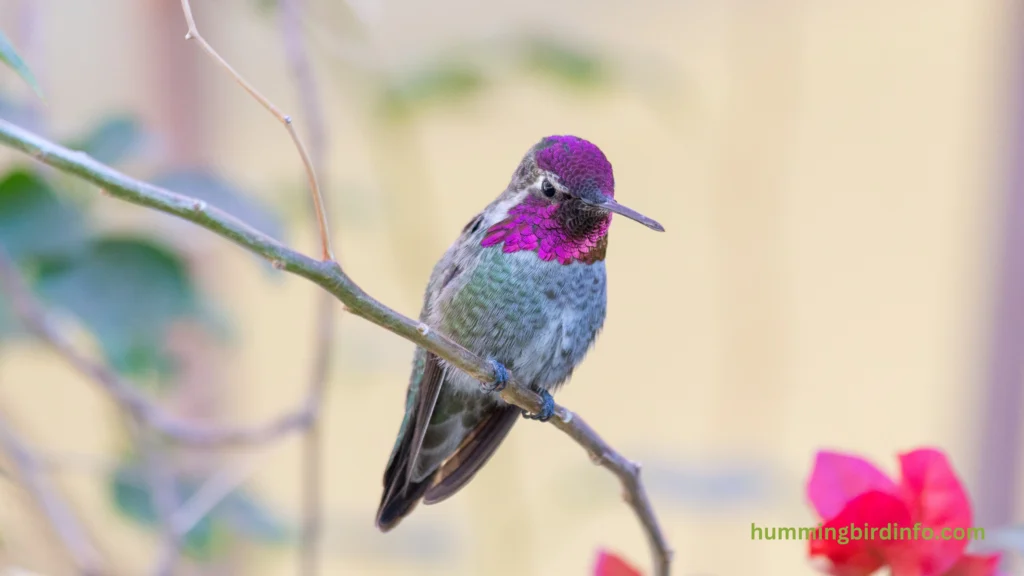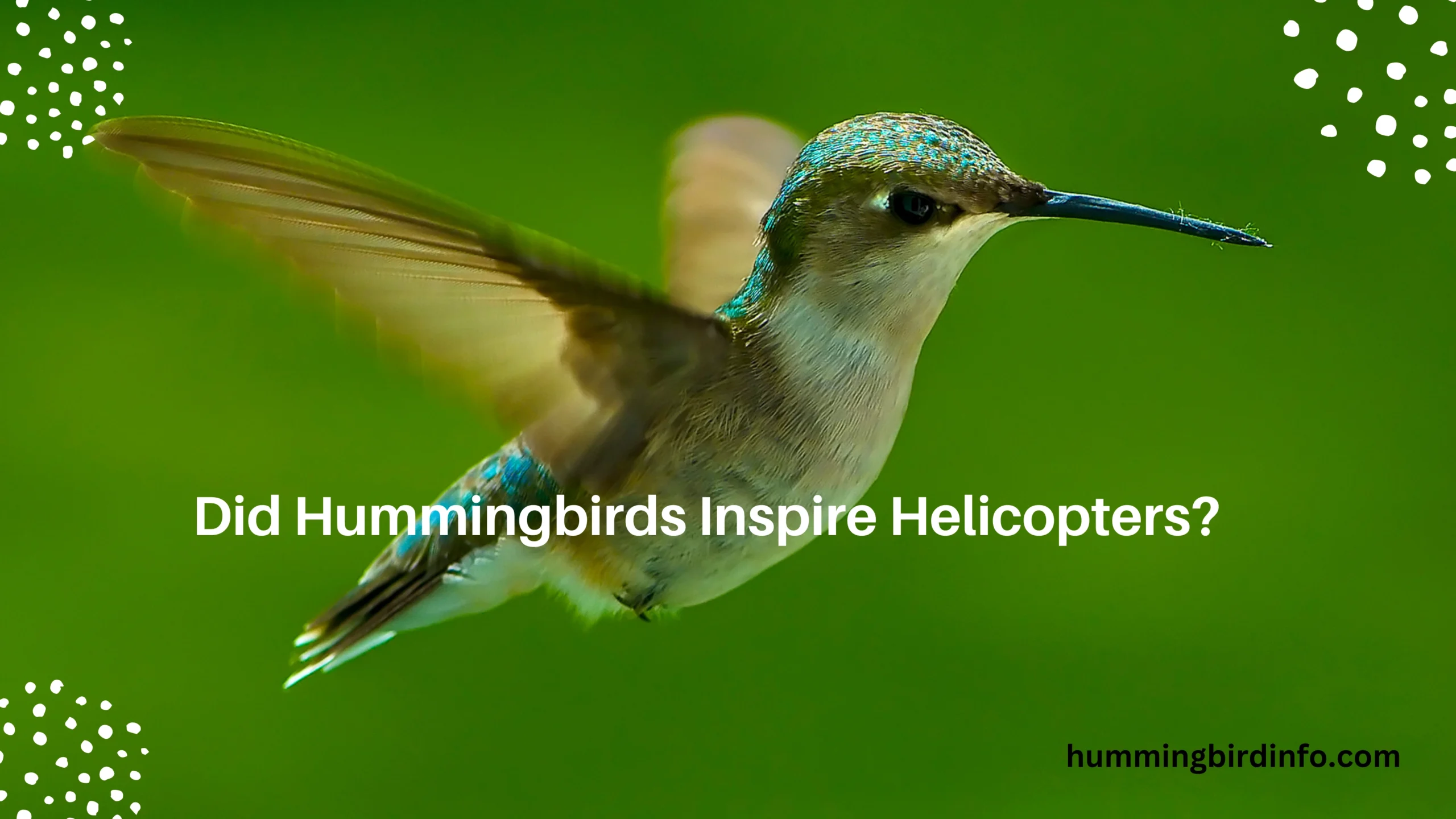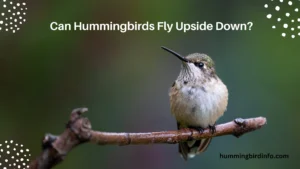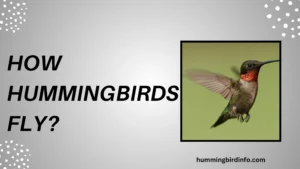Hummingbirds are among nature’s most incredible aviators, able to hover effortlessly in mid-air, fly backward, and change direction in the blink of an eye. Their unique wing motion and agility make them unlike any other bird, and their flight is nothing short of a marvel.
But what if I told you that these tiny, agile creatures might have played a role in shaping one of modern technology’s most revolutionary inventions? Yes, we’re talking about helicopters—the machines that allow us to take off and land vertically, hover, and maneuver in ways fixed-wing aircraft cannot.
So, did the flight of hummingbirds actually inspire the development of helicopters? While the concept of vertical flight has existed for centuries, the design and mechanics behind modern helicopters and their ability to hover may have been influenced by the flight patterns of hummingbirds.
The question is intriguing, and it raises the idea of how nature’s ingenuity continues to inspire cutting-edge technology.
In this article, we’ll explore the history of vertical flight, the aerodynamics of hummingbirds and helicopters, and the field of biomimicry, which bridges the gap between nature and technology. Let’s dive into the fascinating question of whether the hummingbird’s flight truly influenced the machines that take to the skies.
Contents
- 1 A History of Vertical Flight
- 2 The Principles of Flight: Hummingbirds and Helicopters
- 3 The Influence of Nature: Biomimicry in Aviation
- 4 Comparing Efficiency and Challenges
- 5 Conclusion
- 6 FAQs
- 7 1. Did the flight of hummingbirds directly inspire helicopters?
- 8 2. How do hummingbirds hover?
- 9 3. What is biomimicry?
- 10 4. How is a helicopter’s rotor similar to a hummingbird’s wings?
- 11 5. Why are hummingbirds so agile in flight?
- 12 6. Can helicopters achieve the same level of maneuverability as hummingbirds?
A History of Vertical Flight
Early ideas about vertical flight date back centuries, with ancient Chinese flying tops being one of the earliest examples of humans exploring the concept of hovering flight.
Later, Leonardo da Vinci’s “aerial screw” design, although never built, signified an early attempt at creating a machine that could take off vertically, similar to a modern-day helicopter.
Fast forward to the 20th century, and pioneers like Igor Sikorsky pushed the limits of aviation with his successful helicopter designs. His contributions were pivotal in making vertical flight a practical reality, moving from conceptual designs to operational machines.
By the 1940s, Sikorsky’s designs, along with advancements in rotor technology and materials, made the helicopter a viable tool for a variety of purposes, including military and rescue operations.
Throughout this evolution, the basic principles of vertical flight remained rooted in airflow dynamics—concepts that would later be linked to the way hummingbirds fly.
As technology progressed, engineers began looking to nature for inspiration, discovering ways to improve maneuverability, efficiency, and rotor performance.
The Principles of Flight: Hummingbirds and Helicopters
At their core, both hummingbirds and helicopters rely on similar aerodynamic principles. To achieve lift, they both manipulate air with wings or rotors. Hummingbird wings move in a figure-eight pattern, generating lift on both the upstroke and downstroke, allowing them to hover and fly in all directions.
Helicopter rotors, on the other hand, rotate, changing the angle of attack to generate lift and provide the vertical thrust needed for hovering.
Hovering is a defining feature of both creatures and machines. Hummingbirds can hover for extended periods by adjusting their wing angle and speed, while helicopters achieve vertical takeoff and hovering by adjusting the tilt of their rotor blades.
This mimics the precise control found in hummingbird flight, where tiny adjustments can drastically affect their movement.
Another similarity lies in maneuverability. Hummingbirds can rapidly change direction, fly backward, and even hover in place, much like helicopters. Both rely on instantaneous control over their flight path, something that sets them apart from other types of aircraft or animals.
This ability to change direction at will is a key feature in both hummingbird and helicopter design, making them incredibly agile.
The Influence of Nature: Biomimicry in Aviation
Biomimicry refers to the practice of imitating nature’s strategies in designing technology. Many aviation technologies have been inspired by the natural world, with bird wings influencing airplane designs, and now, hummingbird flight influencing vertical flight technologies.
Researchers have studied the mechanics of hummingbird wings to understand their flight abilities better, particularly their hovering and agility.
In fact, drones and other small aerial vehicles have drawn from the hummingbird’s unique flight dynamics. The tiny rotor blades and advanced control systems used in some drones are directly inspired by how hummingbirds adjust their wing angles to achieve stability and rapid movement.

While helicopters have been around for decades, it is ongoing biomimicry research that continues to improve the efficiency and versatility of vertical flight technologies, making them more responsive and maneuverable.
There have been specific instances where engineers and designers have cited the hummingbird as a source of inspiration.
Their precise control over flight movements has been pivotal in improving micro-robotic flying machines, bringing us closer to mimicking the natural wonders of these tiny birds.
Comparing Efficiency and Challenges
Hovering efficiency presents one of the key differences between hummingbird flight and helicopter flight. Hummingbirds use a remarkable amount of energy, with their metabolic demands being higher than that of many other animals.
In contrast, helicopters require significant fuel consumption to hover, especially with larger models. As technology advances, research has focused on making helicopters more energy-efficient, drawing inspiration from hummingbird physiology to reduce their fuel usage.
However, scaling down helicopter technology to mimic the size and agility of hummingbirds remains a significant challenge. The biomechanics of hummingbird flight—especially their unique wing motion—are incredibly difficult to replicate in machinery.
While advances in materials science and micro-robotics are bringing us closer to creating smaller, more agile flying machines, there are still limitations in mimicking nature’s designs at a smaller scale.
Despite these challenges, advancements in technology continue to improve the performance of vertical flight machines, especially in smaller applications like drones and search-and-rescue aircraft.
With ongoing research, we may one day develop aircraft that can more closely replicate the finesse and efficiency of hummingbird flight, unlocking new possibilities in aviation.
Conclusion
In exploring the fascinating question of whether hummingbirds inspired helicopters, we’ve uncovered how vertical flight has been a centuries-long pursuit, rooted in both human ingenuity and nature’s brilliance.
While the development of helicopters was not directly based on the hummingbird’s flight, their aerodynamic principles have undeniably influenced modern designs—especially in areas of maneuverability and efficiency.
Biomimicry plays an essential role in pushing the boundaries of aviation technology, and hummingbirds continue to inspire innovations in vertical flight.
While we may not have fully captured the intricacies of their flight just yet, the tiny, powerful bird serves as a reminder of how nature’s designs can lead to groundbreaking advancements in human technology.
FAQs
1. Did the flight of hummingbirds directly inspire helicopters?
No, while helicopter design predates the detailed understanding of hummingbird flight, their aerodynamic principles have influenced advancements in vertical flight.
2. How do hummingbirds hover?
Hummingbirds achieve hovering by moving their wings in a figure-eight pattern, creating lift on both the upstroke and downstroke.
3. What is biomimicry?
Biomimicry is the practice of designing technologies inspired by nature’s strategies, such as how hummingbird flight has influenced drone and helicopter design.
4. How is a helicopter’s rotor similar to a hummingbird’s wings?
Both rotors and wings generate lift by manipulating air. While helicopters rotate their blades, hummingbirds adjust their wing angles to achieve vertical lift and maneuverability.
5. Why are hummingbirds so agile in flight?
Hummingbirds have a unique wing structure and the ability to make quick adjustments to their wing motion, allowing them to change direction rapidly and hover in place.
6. Can helicopters achieve the same level of maneuverability as hummingbirds?
While helicopters can be highly maneuverable, hummingbirds excel in rapid, precise flight changes due to their more flexible wing movements.








